Pilot Chronicles: Diversion in Moscow due to thunderstorms
Ever wondered what a day in the life of an airline pilot looks like? Our “Pilot Chronicles” give a peek behind the scenes of a career above the clouds. This time, we follow Skywings flight instructor Mathias Callier on his 2-day trip, taking us to Stockholm Bromma with its short runway and to Moscow, where thunderstorms forced the crew to divert.
Flying across europe is challenging and exciting, there is an excellent mix of (very) short flights and long flights (up to 5 hours). Jump on board and follow me along my two-day work trip, flying to Stockholm Bromma and Moscow Sheremetyevo airports.
My ‘first working day’ starts very relaxed. I have one flight planned with a sign in at 14:00 Local Time to Bromma, Stockholm in Sweden. Since a few years now, we receive all of our flight information on an electronic tablet, reducing paper on board.
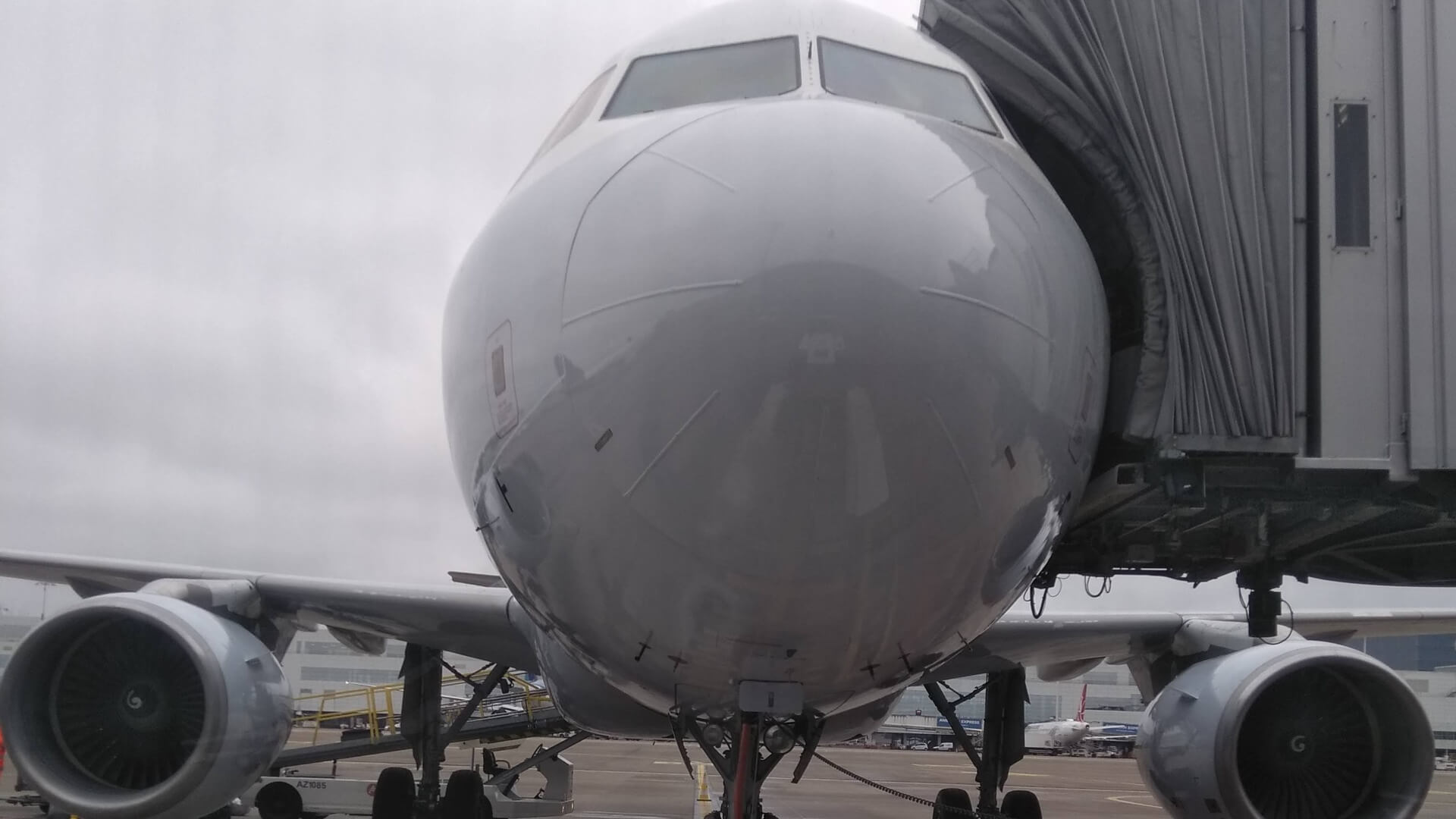
DAY 1: Brussels (BRU) – Stockholm Bromma (BMA)
Pre-corona the crew met in the “crew briefing room” in our headquarters before the flight to discuss the most important flight details but now, we follow the exact same way as our passengers and we meet in the airplane about 45 min before scheduled take off time.
Once in the airplane, we download our flight folder with the on-board wifi (before you start dreaming, it’s only working on the ground) and look at the weather before we make our final fuel decision. We normally also discuss who will be PF (pilot flying) and PM (pilot monitoring) but on this flight it’s quite easy as Bromma is a “captain’s landing” destination due to the complexity of the airport, so he will start flying and I will be pilot monitoring (performing radio communication and in-flight administration). Tomorrow we switch roles.
An airbus 319/320 consumes about 2000 kg of JET-A1 fuel per hour. If we expect thunderstorms or fog we often take 0,5 Ton or 1 ton extra fuel, which gives some buffer for in case we have to enter the holding. But today we expect clear skies and temperatures up to 30 degrees in Stockholm: we stick to or minimum block fuel, which is 6,4 Tons.
Now the “hard” work starts for the PF: He prepares the aircraft for flight: engine fire tests, initializing the flight plan and checking the proposed routing, aligning the IRS platforms, calculate our distance and flap position for take-off and then we insert all the data into the on board flight computer.
You probable wonder what the job of the PM is during this set-up? Well, we get to stretch our legs and do the walk around the aircraft.
While we do all this, our cabin crew prepares the aircraft to receive our 130 passengers. About 25 minutes prior departure the boarding commences.
By the time I get back in the flight deck, I cross check all the data the captain has inserted into the computer. I calculate my own take-off performance and if everything matches the PF performs the departure briefing and while passengers are still boarding. We are ready to go about 10 min prior departure.
We wait for the final load sheet to come in and close the door nicely on time for our 2 hour flight to Sweden.
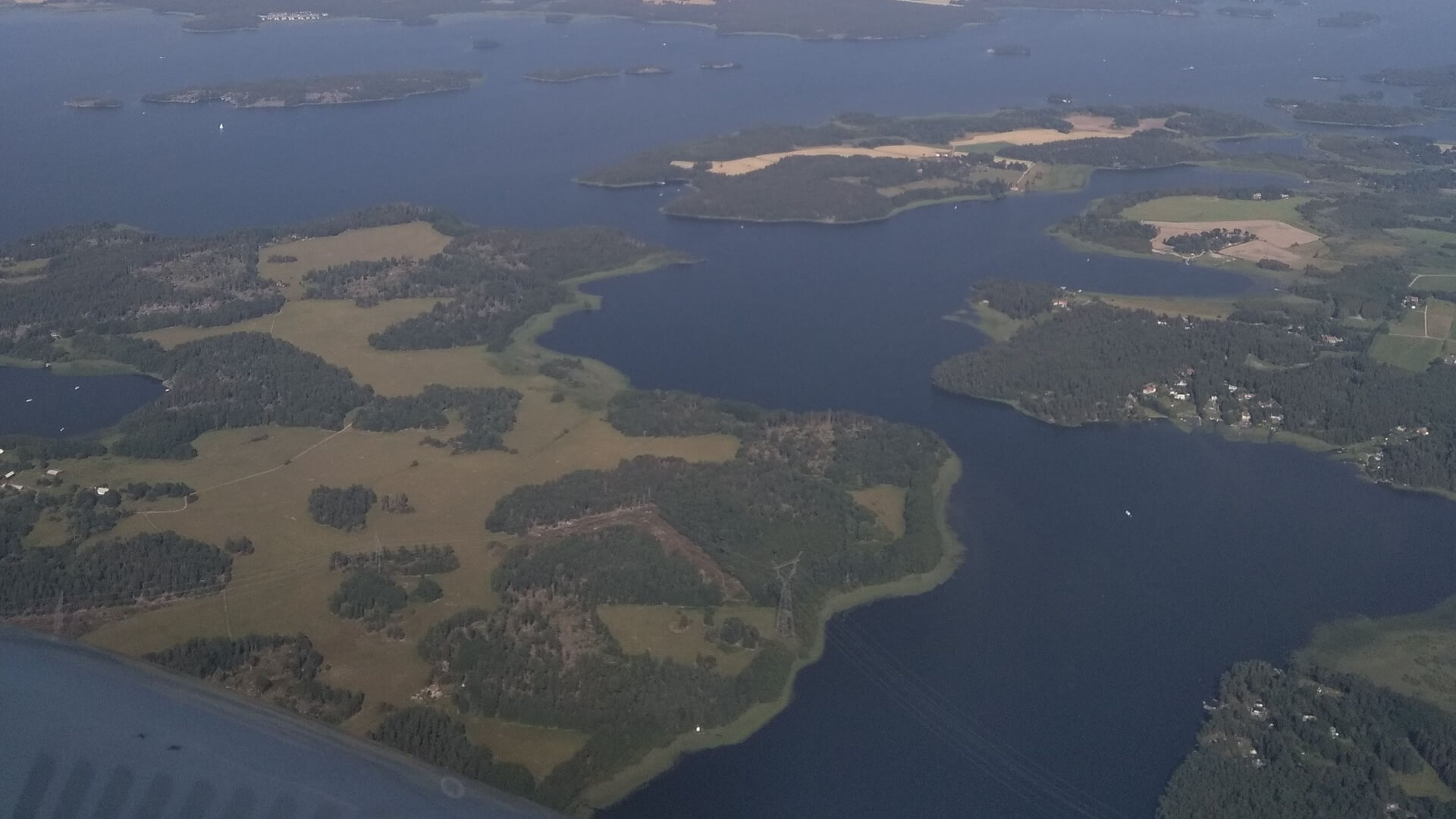
200 Nm (Nautical miles) before reaching the airport, I record the ATIS (automated weather and airport information report) and hand it over to my colleague. He inserts all the data into the flight computer, and I listen to his thorough approach briefing. We start descending about 120 Nm before the airport and the lower we get the nicer the views: there are just lakes everywhere. It’s breathtaking, the views when flying northbound.
While we descend, we see the outside temperature increasing from -56°C to a nice 29°C. About 10 Nm before glideslope intercept (vertical path of the approach to the runway), we are cleared for the approach, and we strictly follow the prescribed procedure. Decelerating through 200 Knots, the captain calls “flaps one, speed 180” and shortly after, “flaps 2”. At glideslope intercept, we are fully configured for landing. The captain looks outside and I’m mostly looking inside to crosscheck all parameters.
At 130 Knots, we overfly the runway threshold and a few seconds later we touch the runway under a bright sun and clear blue skies. I am already thinking about ordering an ice cold coke at one of my favourite restaurants with lake view, but first the after landing checklist.
Sotckholm Bromma is comparable in size with Antwerp airport, so after only a few minutes of taxi we shut down the engines, and while performing the shutdown checklist, the very efficient ground team places stairs in the back and front and our passengers make their way to the exit. It’s about 17:30 and my working day is done. In the hotel we change clothes and decide to go for dinner with the entire crew.
It’s about a 20 min walk along the lake and what a contrast with Brussels: how nice it is to fly just a few hours and escape the bad weather we had in central Europe this Summer. After a delicious meal we head back to the hotel to get some rest. Pick-up at the hotel is at 05:50 local time tomorrow and we’ll have a very long day ahead: Flying back to Brussels and then on to Moscow and back to Brussels. This will bring us close to a maximum allowed duty of 12 hours. I hope we won’t run into any delays. But that might very well be the case…
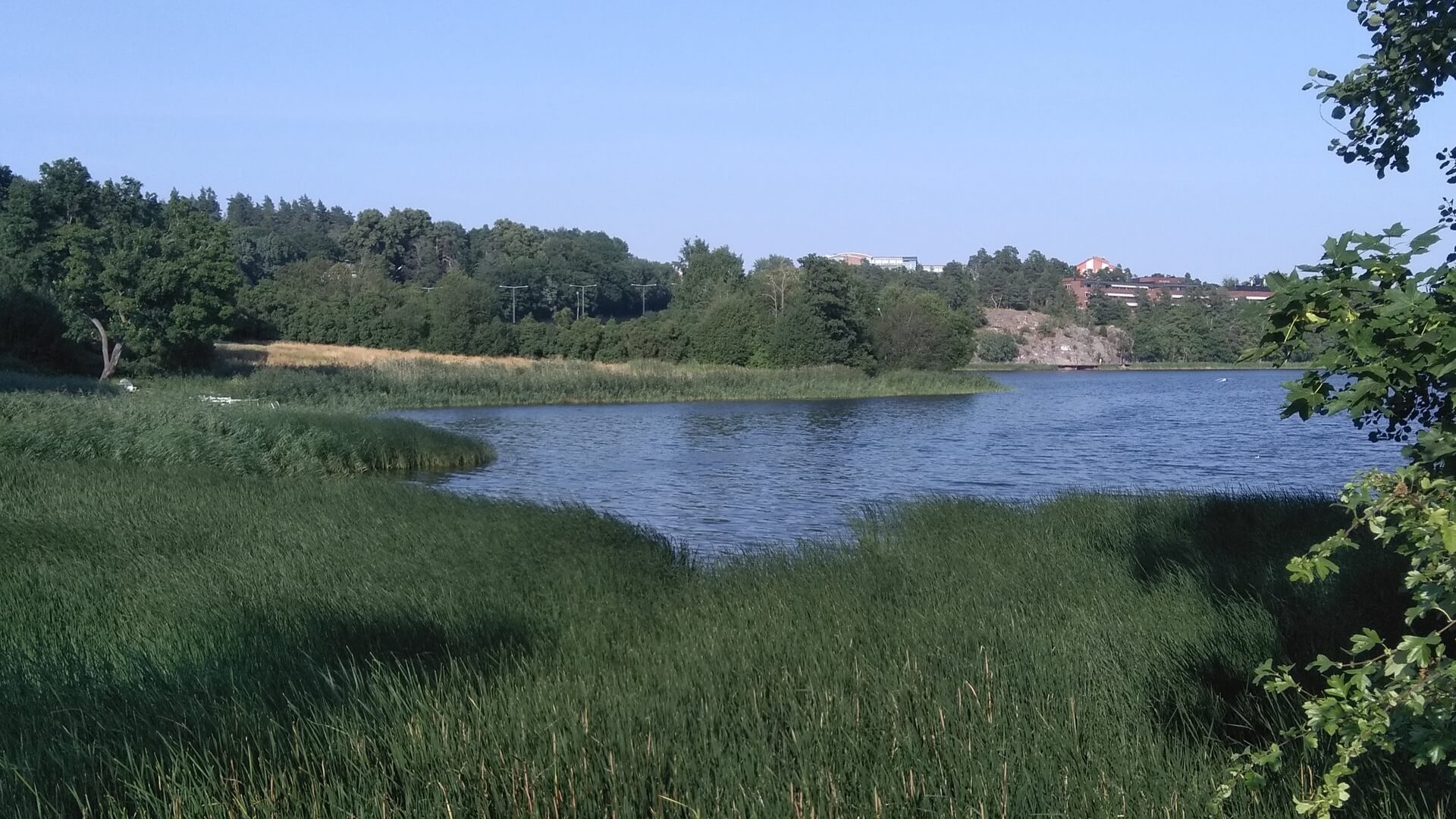
DAY 2: Bromma (BMA) – Brussels (BRU) – Moscow (SVO) – Brussels (BRU)
Stockholm (BMA)- Brussels (BRU)
Ten past 5 in the morning: I hear a noise in the far distance coming closer and closer until the moment I wake up and realize my alarm is shouting at me. We sleep in so many different beds that I need just a few seconds to realize where I am. While I pack my small suitcase, I start up my tablet computer and download the Flight Plan already for the flight back to Brussels.
Weather seems fine, no special NOTAMS (airpot and en-route information bulletins) and also along the route, nothing out of the ordinary. I’m happy with what I see. I leave my room towards the hotel lobby and meet my crew. Just a small breakfast and off we go to the airport.
Today I will be the flying pilot meaning now it’s my turn to load the flight computer with all the data, check the uploaded routing, make take off calculations and perform the briefing. Again, good teamwork because we are ready 12 minutes before planned start-up time.
Engines on and off we go, what a start of the day! We cruise back at Flight Level 380. In cruise flight we have a lower workload than during take-off and landing but there are still duties we must perform. During the cruise phase, we try to have the best situational awareness possible by gathering weather info from airports around, we check if the fuel is still according to flight plan predictions, we monitor and interact with ATC (air traffic control) all the time. Of course, pilots are also human, meaning we take the time to eat something and leave the flight deck shortly for a bathroom break. As we keep busy, a flight in the cockpit passes a lot quicker than flying as passenger.
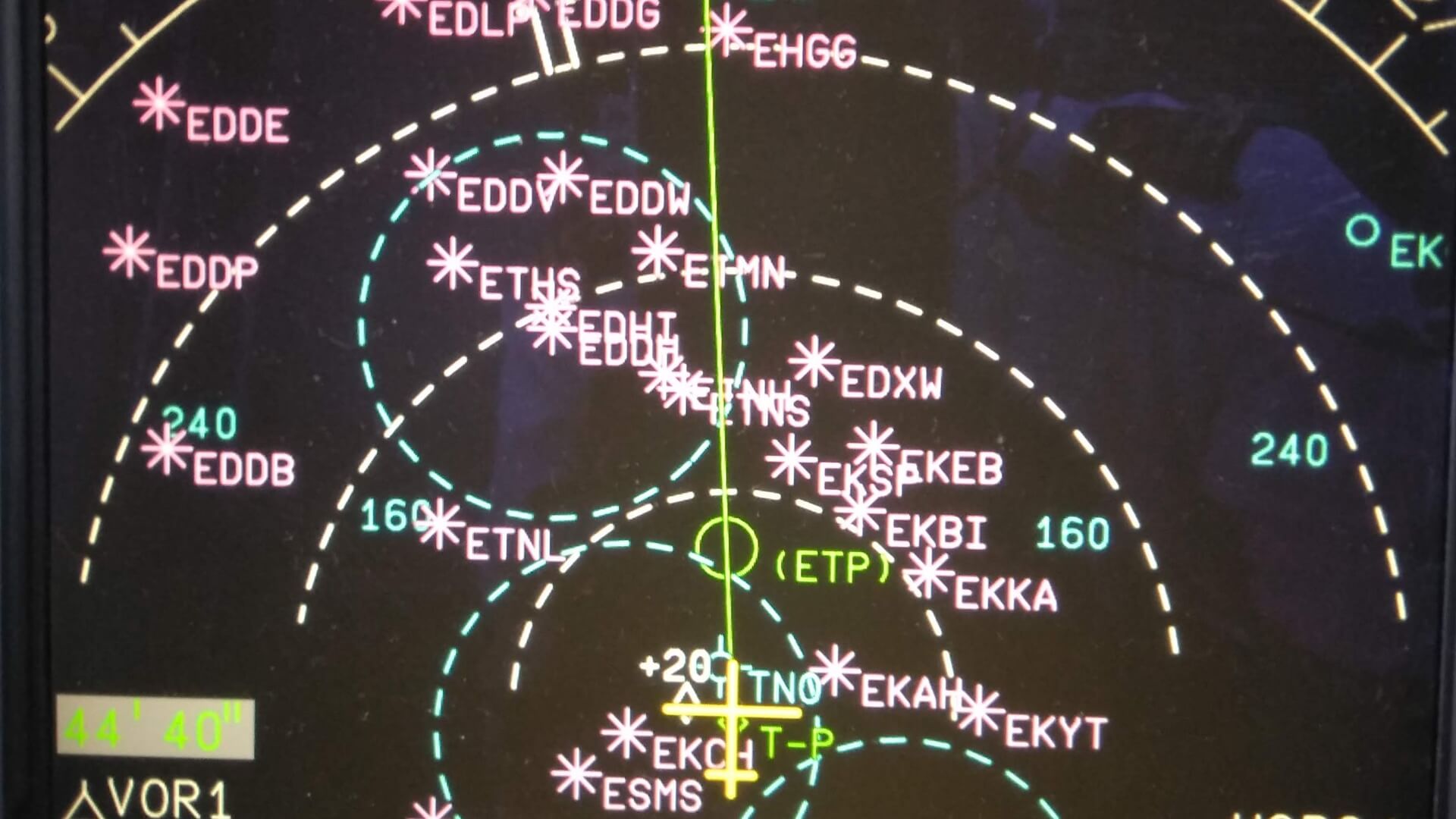
This is how my ND (navigation display) looks like during my flights. For my situational awareness I draw circles around possible diversion airports with a 60 Nm radius, where in case of real trouble I know how far we are, and which airport is the best option to turn to. Always Hope for the best but prepare for the worst.
After an uneventful 2-hour flight, we land in Brussels and perform our shutdown duties and already download flight plan for our next flight to Moscow. The game starts all over again.
Brussels (BRU) – Moscow (SVO)
Thunderstorms and heavy rains are forecasted in Moscow all day long and on our route chart we see that there might be some thunderstorm clouds we will have to circumnavigate half way to Moscow.
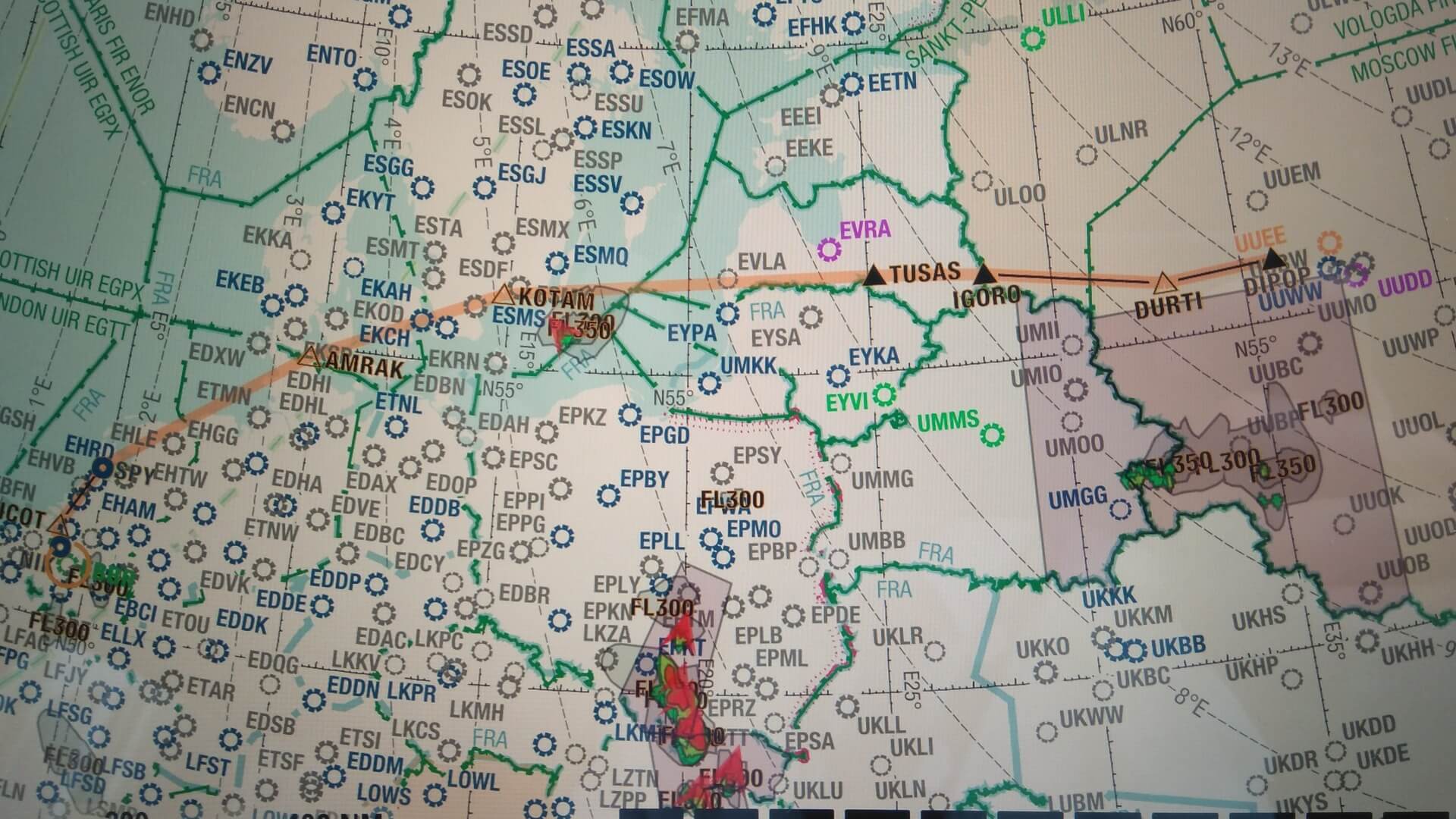
We decide to take 2000 Kg extra fuel (1 hour extra airborne time) to buy ourselves some time en-route and in the vicinity of our destination.
At 10:30, I roll onto the runway, align the aircraft with the center line and hold the brakes while applying take-off thrust. We gain more and more speed, the captain calls V1 (take off may no longer be aborted), one second later ‘rotate’. I pull the stick gently backwards and lift the 70.000 Kilograms Airbus off the runway.
“Positive climb, Gear up!”. While accelerating, I request to raise the flaps. We can see rain showers in our departure sector. The weather radar is fully colored. I chose to manage my workload as I guide the aircraft through the best possible weather, so I engage the autopilot earlier than normal and look for the best possible route.
Almost midway, as expected, we see some CB’s (cumulonimbus: thunderstorm clouds) crossing our track. By selecting 5 degrees to the right, we avoid the turbulent weather and lunch is served.
I request weather of the surrounding area and look at the Moscow forecasts. They are not good: there are thunderstorms in the area and windshear (aggressive and dangerous wind shifts) is reported on one of the 3 runways.
That’s our trigger to start thinking ahead. There is a good possibility that the thunderstorms will move over the airport making landings impossible at our destination. Knowing the area, we know there are few options to divert. Moscow has three airports, but they are very close together, meaning if the weather is bad in one, it will be bad in all of them. With about 1 hour of flight time left, we start discussing ‘what if’ we cannot land due to thunderstorms over the airfield?
With 2 tons of extra fuel we don’t stress too much as we still mant options enough. We could even fly back to Vilnius should it be necessary.
About 180 Nm before Moscow, we were asked by the air traffic controllers to start our descent to 32000 feet and a few minutes later they requested us to keep minimum clean speed (the minimum speed an aircraft can fly without extending flaps). I could hear a little stress in the controller’s voice. And we know as well: flying minimum speed at this altitude and distance from our destination is not a good sign.
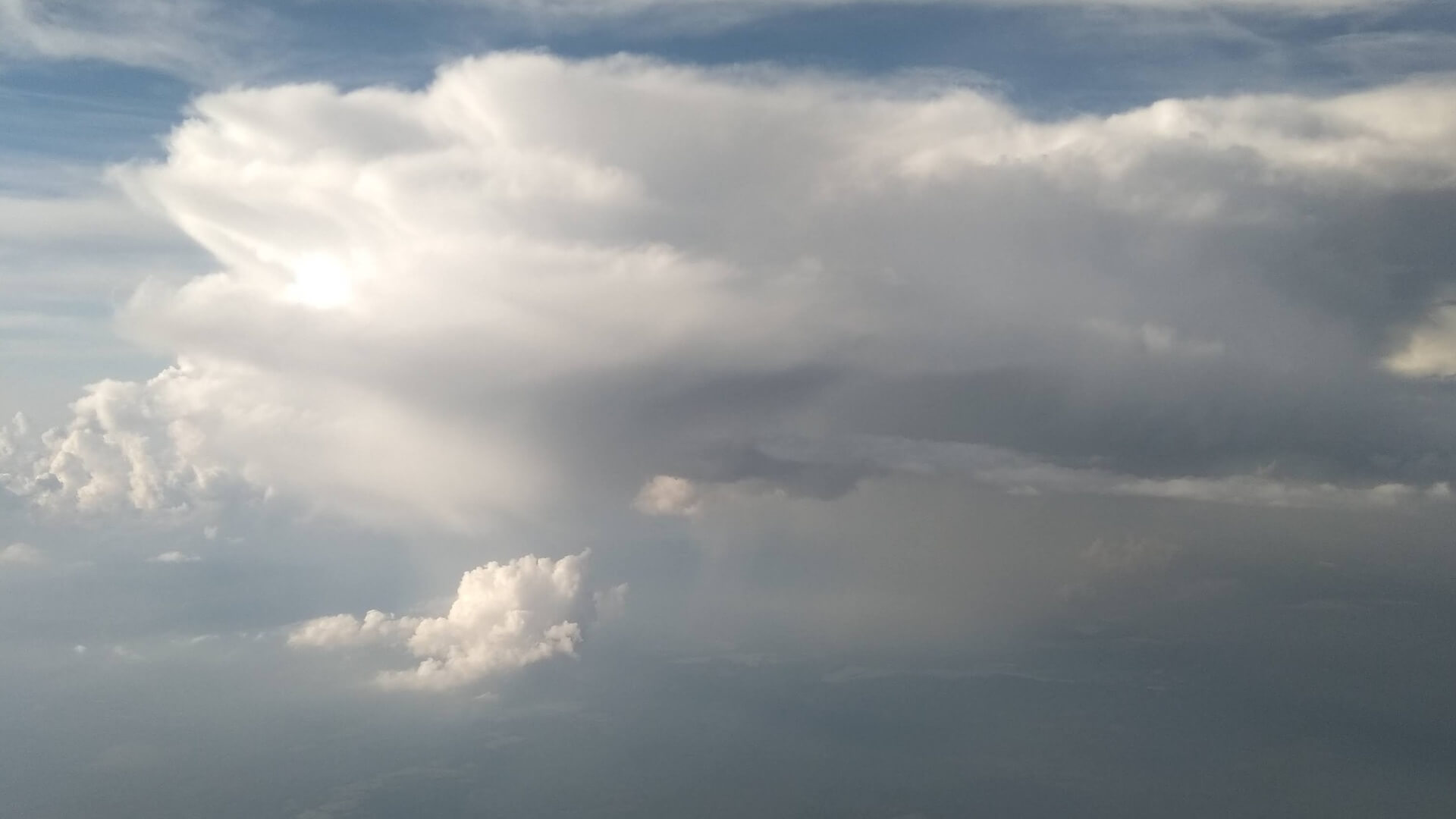
We were transferred to Moscow control and on first contact with them, we were asked to enter the holding at FL320. Initially we received only a 10 minutes holding time, which increased to 20 minutes and upon request of the landing sequence we were number 18! Seeing the trend of delays, even with our 2000 kg buffer we would not be able to land within our legal fuel limit. Realising the thunderstorms were moving very slowly from North to South, we decided to divert to Moscow Domodedovo.
We were promised to be number one for the approach without any delay and we landed after 3h50 flight time instead of the planned 3h10.
Once on the ground, the challenge is not over yet. We had to wait 3 hours to be supplied by fuel. What happened during those 3 hours? Well, our passengers were almost all Russian and as they were in Moscow anyway (only not in the intended airport), we decided to disembark everyone.
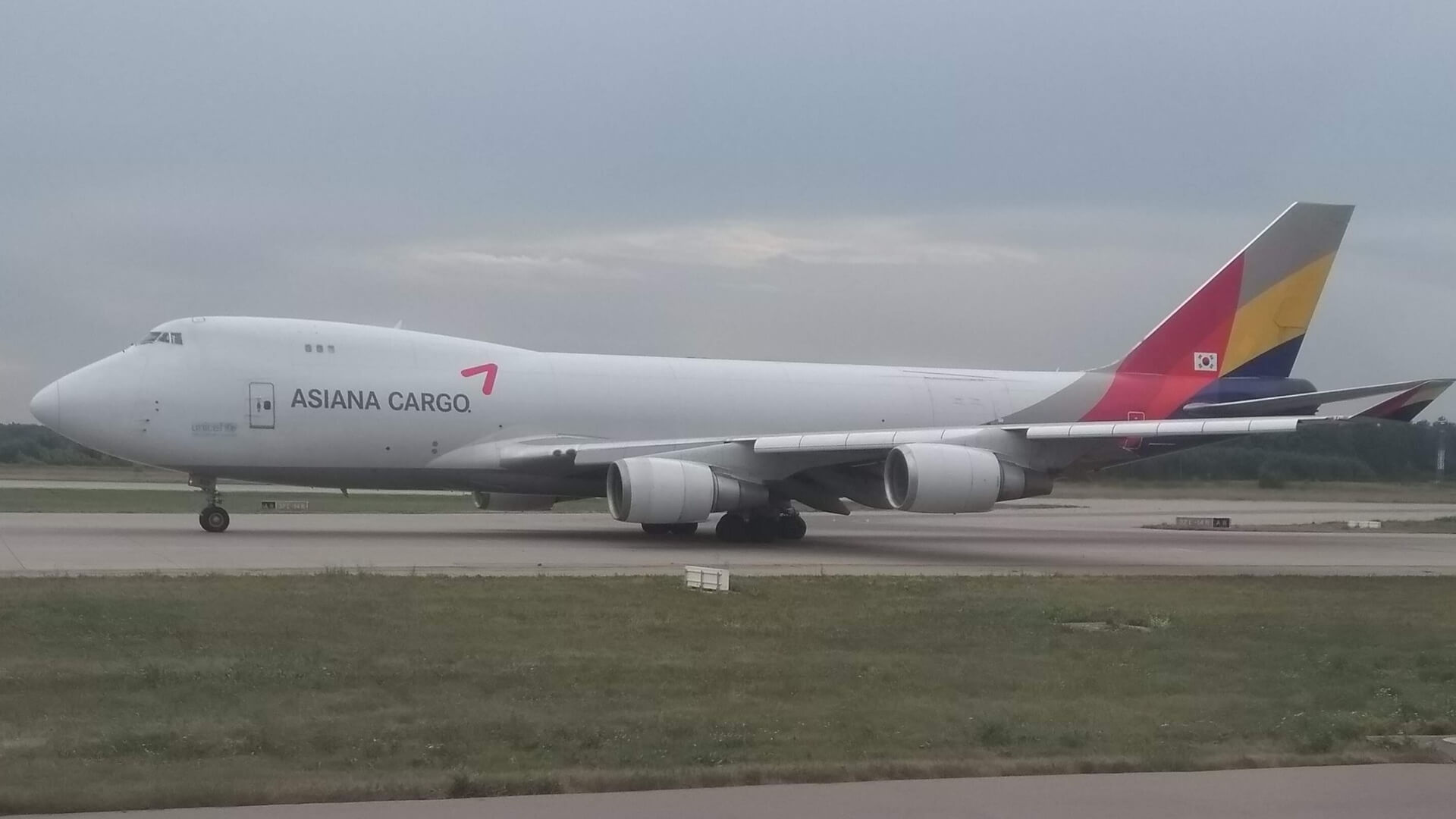
While waiting, we did some nice B747 spotting, as this is a major cargo hub airport
We calculated our maximum duty time (as a pilot you have maximum limitations on duty and it’s your own responsibility to comply with these rules, your company can help you but in the end the pilot is responsible for his flying license). The maximum allowable duty of that day was 15 hours, meaning there were only 2 options for us: fly empty to Sheremetyevo airport and sleep over there or fly empty to Brussels.
Together with the company, it was decided to come back without passengers and after being on the ground for 3h30 in Domodedovo airport, we left again for Brussels.
Navigating our aircraft around the ‘dying’ thunderstorm and rain cells, we climbed back high and dry in the sky to cruise back to Brussels. 3 Hours later, with a 15-hour working day behind us, we were tired and happy to be home. It’s 20:45 and my day is finally over.
Tomorrow I have a Tenerife flight planned with a sign time in at Brussels airport at 14:45. Let’s get some sleep quickly and hope for better weather tomorrow.
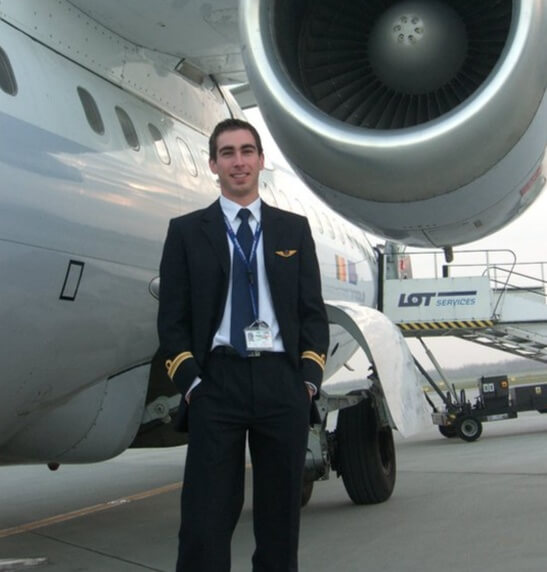
Mathias Callier
Flight Instructor and airline pilot.